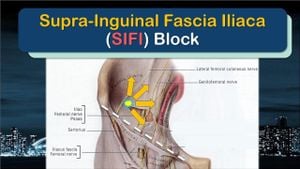A growing body of research is shedding light on the complex and often puzzling symptoms of Long COVID, particularly the abnormalities affecting skeletal muscles. Recent findings highlight physiological differences faced by Long COVID patients suffering from post-exertional malaise (PEM), refuting claims attributing these issues merely to deconditioning.
The study published by B. Appelman, B.T. Charlton, R.P. Goulding, and colleagues distinguishes the unique characteristics of muscle-related symptoms experienced by Long COVID patients. It emphasizes, "We refute…that our findings are due to deconditioning, as Long COVID-related skeletal muscle differ fundamentally from those caused by deconditioning." This assertion arises from comparative analyses showing significant discrepancies between Long COVID patients and healthy individuals undergoing similar physical activity levels.
Post-exertional malaise is not just muscle soreness; it encompasses various debilitating symptoms. Researchers note, "PEM encompasses a variety of symptoms and not only muscle soreness," which highlights the complexity of patient experiences. This distinction is especially important since the literature often muddles general muscle soreness with true pathological conditions affecting those with Long COVID.
The study involved comprehensive clinical evaluations and the utilization of tools like the DSQ-PEM questionnaire to objectively assess symptoms and physiological responses. This methodological rigor allows for clarity on how exercise impacts Long COVID patients, categorized by PEM. Interestingly, comparisons surfaced showing healthy controls did not report symptoms consistent with PEM, even when they possessed fitness levels on par with Long COVID patients.
One of the primary arguments posed by the researchers is against the notion of deconditioning as the sole factor for observed muscle funkcions. "Despite several controls having…none reported PEM symptoms," the authors reiterate, stressing the physiological alterations found within the skeletal muscles of Long COVID patients cannot simply be explained by lack of exercise or muscular deconditioning. Instead, they suggest there are intrinsic differences at the metabolic and functional levels, warranting closer examination.
Importantly, the findings present broader contributors to the phenomenon of PEM, delineated from muscle pain or fatigue alone. Clinical assessments indicate Long COVID patients reported significantly more muscle or joint pain—64% before and 80% one-day after PEM induction. This was accompanied by heightened fatigue intensity, substantiated by structured evaluations.
Interestingly, the physiological alterations extend beyond subjective reports, as performance tests revealed distinct impairments. For example, findings suggested reductions in maximum oxygen uptake and peak power output were evident among Long COVID patients at statistically significant levels compared to healthy controls. These results raise pressing questions on exercise guidelines for those grappling with Long COVID, especially individuals who experience PEM.
Of note is the recommendation for caution when considering exercise protocols. While pacing and low-intensity activities may be beneficial, the study calls for more research to define safe exercise thresholds for Long COVID patients with PEM. Acknowledging the current lack of clarity, the researchers state, "Long COVID and PEM are poorly understood, and our study did not address the efficacy or advisability of exercise training in Long COVID treatment." They advocate for refined interventions and high-quality studies focused on delineation of exercise modalities suited for these patients.
Particularly, the nature of Long COVID remains heterogeneous, with this study concentrating on those experiencing PEM—a subgroup warranting unique treatment approaches. Findings suggest proactive efforts are necessary to refine exercise recommendations and therapeutic stratagems as they pertain to the distinct clinical presentations across the Long COVID spectrum.
This recent work enhances our comprehension of the nuanced interplay between exercise, recovery, and persistent symptoms attributed to COVID-19 aftermath, implicatively redirecting the conversation surrounding rehabilitation strategies. Further investigation is urgently required to unravel the physiological intricacies linked to PEM, and to formulate sound practices for affected individuals, cementing the need for evidence-based exercise protocols catering to their specific needs.
Overall, the study marks a milestone as it contributes to the broader narrative of Long COVID recovery, urging consideration of muscle health as integral to rehabilitation efforts, rather than solely focusing on general physical activity levels.



